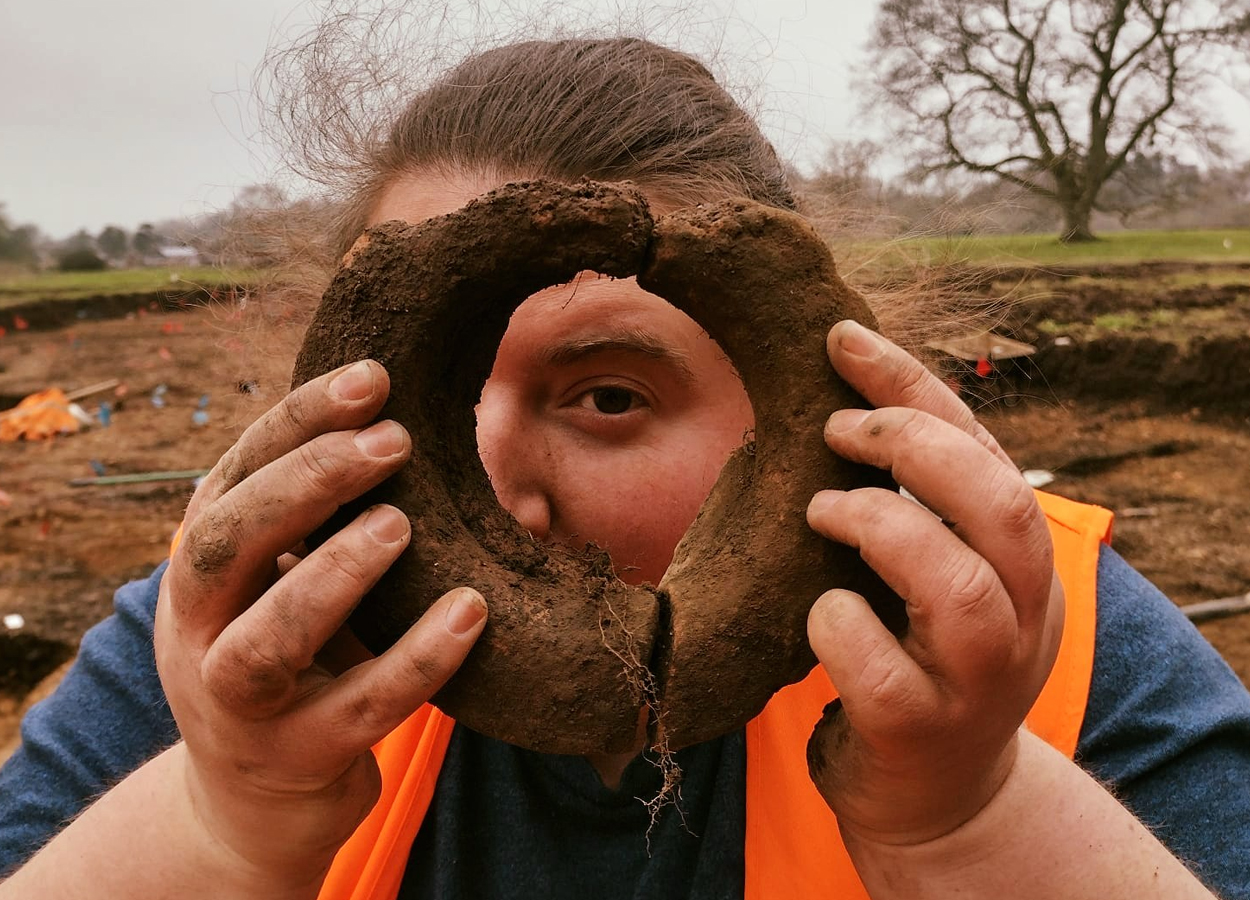Archaeologists from Cotswold Archaeology have uncovered the remains of a substantial rural settlement in Fordingbridge, England, dating back to the Late Iron Age and continuing into the Roman period.
The excavation is being conducted ahead of a residential development by CALA Homes, revealing over 2,000 archaeological features across the 0.84-hectare site.
Located on a river terrace overlooking Allen Brook and its tributaries, the researchers have unearthed at least 15 roundhouses measuring around 13 metres in diameter. The presence of overlapping structures suggests the settlement was continuously inhabited and evolved over an extended period.
Around these early buildings and enclosures is clear evidence of domestic processing and possible textile production.
“Domestic processing of cereals was certainly taking place, as represented by the numerous quern fragments and one particularly exciting discovery: a complete quern stone made of green sandstone, likely sourced from a known production centre in Sussex,” said Cotswold Archaeology.

According to Ruth Shaffery, a stone specialist, complete querns are incredibly rare, and this example had a long and well-used life before being intentionally placed upside down at the base of a pit.
In the sites later phase of occupation during the Middle to Late Roman period, the settlement shifted toward a more industrial use, indicated by evidence of metalworking, large quantities of fired clay, misfired pottery, and burnt flint.
An ongoing analysis of the pottery and fired clay may indicate that the settlement was a local production centre, providing new insights into rural settlement development and local industry during the Roman period.
“With artefact processing and analysis now underway, the Fordingbridge excavations are already providing valuable insights into how this rural settlement grew, adapted, and contributed to the local and regional economy,” added Cotswold Archaeology.
Header Image Credit : Cotswold Archaeology
Sources : Cotswold Archaeology







